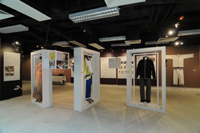
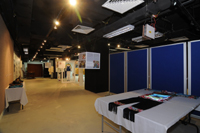
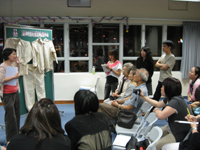
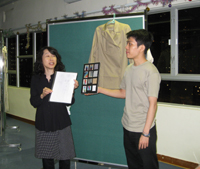
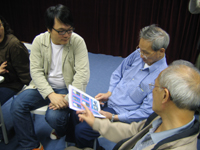
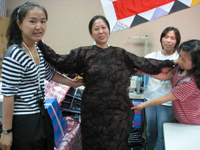
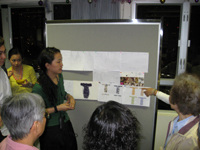
|

Why do we need to redesign burial clothes? Clothing, apart from its functionality, is a manifestation of one’s own identity and character. Burial clothing, in this light, is the final statement about the meaning of one’s own life, and how one sees himself/herself. Given the symbolic significance, it should not be taken casually, especially when the person is no longer in control. Facing the pressure of an aging society, funeral care and death education are in great demand. The issue of death is no longer a taboo. In the dawn of a new century, what is our expectation of this message-loaded piece of garment?
In The Last Suit You Ever Need, elders and designers (Amazing Angle, Cheung Lik, Ranee K, Gloria Wong & Kim Tang, and Mable Wun) are invited by Yu Mak Yuen Integrated Services Centre of Tung Wah Group of Hospitals and Community Museum Project to re-imagine the extended meaning of burial clothes. Their exchange not only leads to possible designs for a contemporary world, but also a dialogue about their expectations, taste, and even about the form of funeral service. The process perhaps is a self-reflection on life by different generations.
Their works meander between convention and reinvention, function and beauty, addressing contemporary lifestyle and incorporating individual histories. The designs are realized with the input of the seamstresses from Tung Wah’s social enterprise. This project has gone through a long process, including concept sketching, prototype making and final project production. In between, two sharings were organized at two stages, respectively to introduce the concept and the prototype and to invite the feedback of the elders. We have to thank the contribution of the seamstresses and the elders. Their openness shows us the quest to address the changing views and need of funeral care. We also hope this exchange and process that crosses sectors and generations will become the basis of a new mode of collaborative production.
|